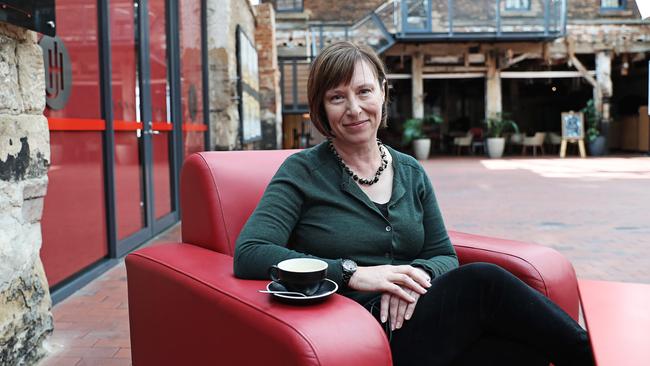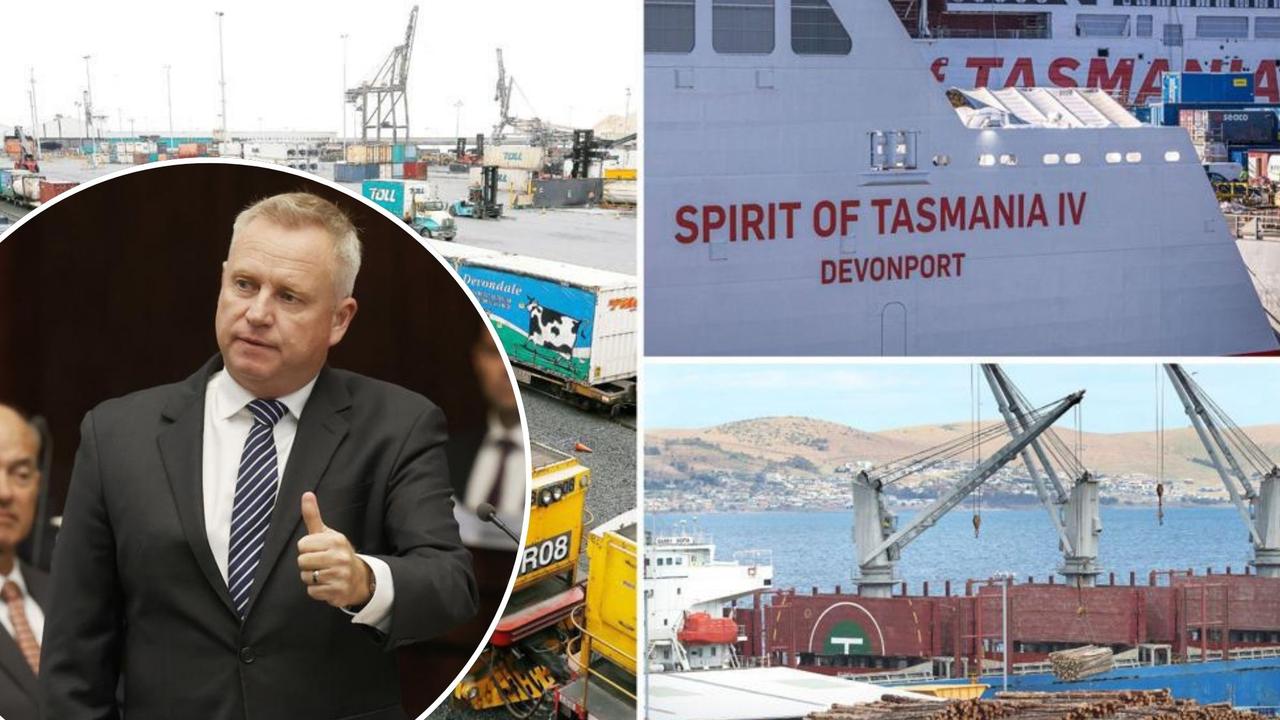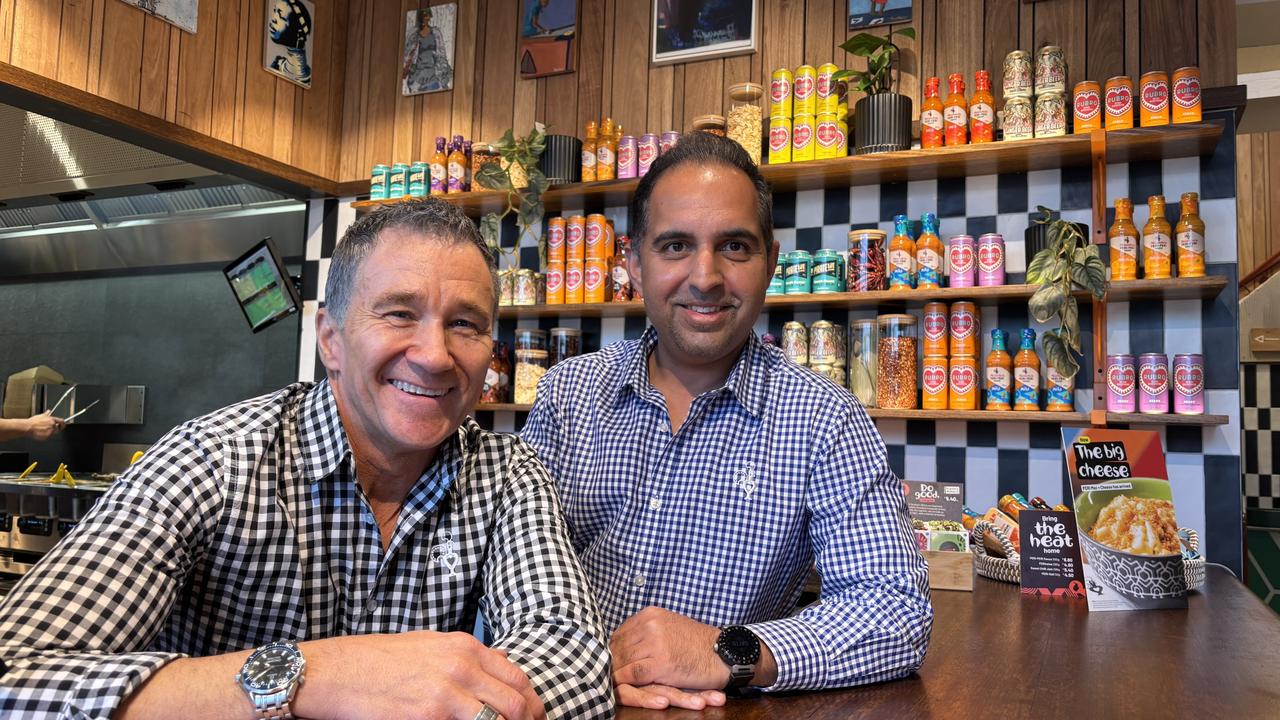Cafe Society: Making a museum for the future
Arts and culture are about to take a digital leap forward, says TMAG director Janet Carding.

Tasmania
Don't miss out on the headlines from Tasmania. Followed categories will be added to My News.
A QUIET revolution is brewing at the Tasmanian Museum and Art Gallery.
It is not apparent at the stately premises on Macquarie and Davey streets.
And it’s not a subversive uprising against the Government’s plan to sell the historically significant Treasury building nearby, which some believe should be annexed for TMAG expansion.
The revolution that director Janet Carding is talking about is more ethereal than that, but she says it has the potential to upend the very idea of what a museum is.
What she is talking about is a digital revolution through an epic electronic archiving project that will allow Tasmanians to see for the first time every piece in every collection.
“TMAG is limited by the size of its buildings and can only show a fraction of its collections,” says Janet over tea at Jam Packed cafe in the IXL Atrium.
“Around the world now are a number of museums displaying their entire collections digitally — and TMAG has embarked on that path.
“I am very excited by that prospect. It’s early days, but we are working towards putting infrastructure in place so people can search for everything.”
MORE CAFE SOCIETY:
LEARNING TO SPEAK IN CONFIDENCE
ALL WELCOME TO HELP BUILD BRIDGES
ROB SHERRARD: GOOD-NATURED BUSINESS HAS LEGS
JOHN FITZGERALD: CONNECT VISITORS TO OUR CULTURE
NIALL DORAN: STRIVING TO INSPIRE YOUNG MINDS
The first phase of the project, which is a partnership with the University of Tasmania, the Queen Victoria Museum and Art Gallery in Launceston and the Tasmanian Archive and Heritage Office, is already funded.
Meanwhile, the museum is assessing its future physical needs. While Janet wants more space eventually, for now she is keen to make even better use of the existing site.
“The Treasurer has given us a clear signal he’d like to test the market with the Treasury building, and we are part of the State Government,” she says, pouring cold water over speculation she has the the old sandstone jewel in her sights.
“I’m wedded to the spaces we have now, which are some of the oldest buildings in the state, and I would like to make a lot more of them. The Commissariat Store is 1808, the Bond Store is 1824 and the [Water] gateway was built in 1826.”
As well as its city site, TMAG also runs a research and storage facility at Rosny, and keeps the state herbarium and botanical collections at the university. TMAG’s strategic plan, developed after Janet’s arrival from the Royal Ontario Museum four years ago, is to grow the institution she leads as a cultural hub.
A calendar in its third year includes events designed to become fixtures, such as the annual Children’s Festival, which begins on April 12.
Museum visitation has grown by 20 per cent in the past three years, with tourism delivering much of that gain.
Family crowd-pleasers such as the dinosaur extravaganza on now are also helping to lift local visitation.
Fresh interpretations of Tasmania’s unique journey and place in the world are what locals most want to engage with, she says.
“The 50th anniversary of the bushfires was a really poignant one for everybody,” she says. “We got such enormous feedback from that [One Hell of an Inferno] exhibition in 2017.”
TMAG is best known for its rich colonial-era collections, an archive ripe for reappraisal as notions of decolonisation and non-Western perspectives are explored through curation and other artistic responses.
Janet says the museum is also committed to bringing Aboriginal culture front and centre, working with an Aboriginal advisory board on projects and exhibitions such as the nationally touring kanalaritja: An Unbroken String, which launched at TMAG in 2016. Rare shell necklaces made by Tasmanian Aboriginal women in the 1880s sit alongside those made by today’s elders and a new generation of stringers, who learned the tradition through the project’s cultural revitalisation workshops.
And it has just launched Hobart Current, a biennial contemporary art program in partnership with the City of Hobart, through which 10 artists will be commissioned to create pieces for a major exhibition. It replaces the City of Hobart Art Prize.
As she looks to the future, Janet is always looking at the past, and she says the time is right to reappraise the Tasmania of the 20th century.
“What we are starting to do is build a collection as strong for the 20th century as we have for the 19th century and colonial period,” she says.


